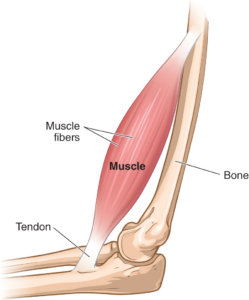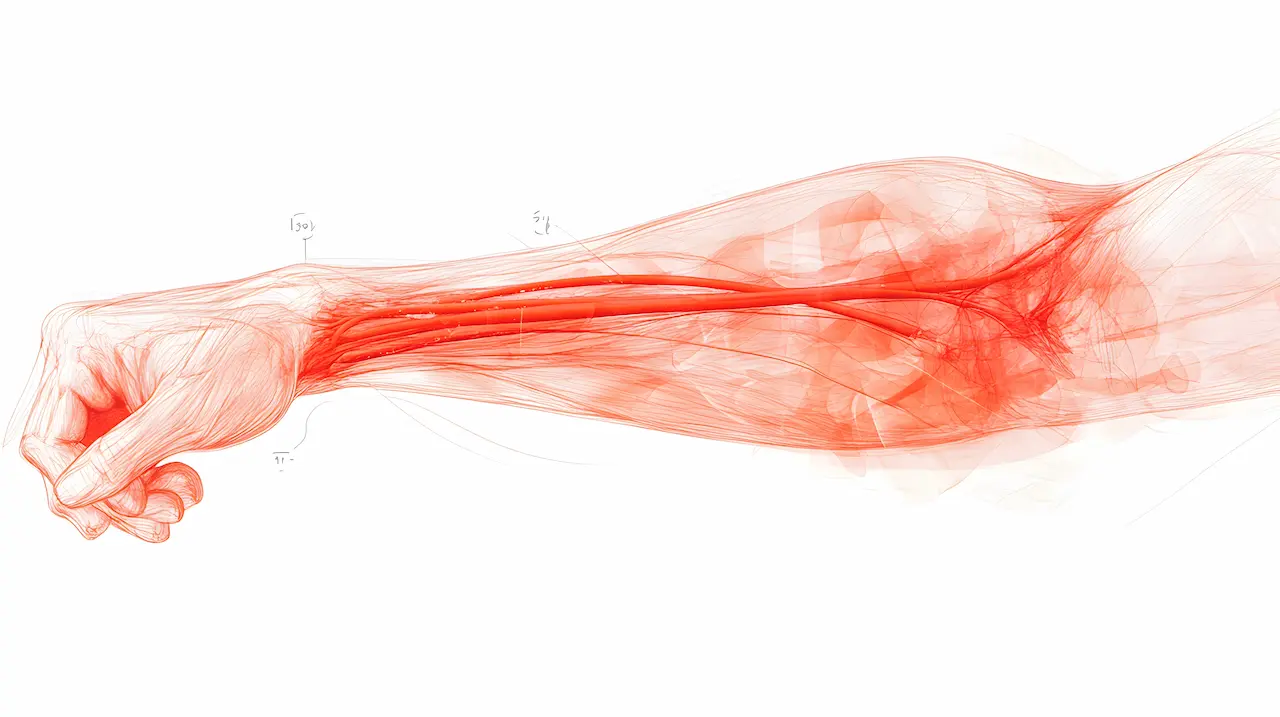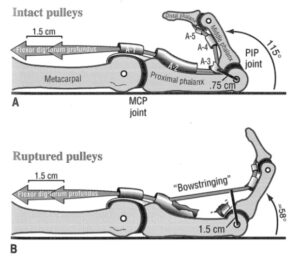
This comprehensive guide is structured to aid NBCOT® exam prep students in understanding the intricacies of the hand’s anatomy, focusing on tendons, zones, and pulleys. Our detailed breakdown offers practical insights with mnemonics and action steps to improve retention and aid in exam preparation. For an expanded deep dive, check our full member content complete with case studies and quizzes.
Zones of Hand and Fingers
Understanding the zones of the hand can vastly enhance your ability to diagnose and treat tendon injuries. Each zone provides vital information for therapists in predicting injury prognosis and guiding post-operative therapy.
Extensor Zones of the Hand
The hand’s extensor zones range from the distal interphalangeal joint in Zone 1 to the proximal forearm in Zone 9. These zones help in classifying and treating extensor tendon zones injuries:
- Zone 1: Distal interphalangeal (DIP) joint
- Zone 3: Proximal interphalangeal (PIP) joint
- …continuing up to Zone 9: Proximal forearm
For more detailed zone mapping and recovery guidance, visit our full guide.
Hand Flexor Zones
Focusing on hand flexor zones is essential for understanding injury impacts and treatment paths. Here’s a breakdown to remember:
Flexor Zones Specifics
The five flexor zones of the hand, each significant for flexor tendon injuries, are chronicled with special attention to their roles in hand physiology.
- Zone 1: Flexor digitorum profundus only
- Zone 2: Referred to as “no-man’s land” due to higher risks of adhesions
- …up to Zone 5: Proximal to the carpal tunnel
Zone 2 is particularly noteworthy for its nickname and challenges in tendon repair.
Fibrous Flexor Sheath
The fibrous flexor sheath serves a key role in safely housing the tendons of the hand, minimizing the risk of bowstringing, and allowing proper finger flexion.
Tendon Pulley System
The pulley system is crucial for enabling the tendons to slide efficiently without detaching from the bones, ensuring overall hand functionality. Focus on the annular and cruciform pulleys for torques and tension resistance throughout different hand movements.
Can you identify the key differences between the extensor and flexor systems in terms of injury risk and rehabilitation strategies?
Exploring More with Us
In our detailed and interactive full content, we delve further into each zone with case studies, aided by visuals to augment your learning. Join us for unparalleled access to quizzes and comprehensive study materials designed to ensure success in your NBCOT® exam.
Want detailed practice tips to ace the NBCOT exam? Join now for full access!
What are the key zones of the hand and finger tendons?
The hand and fingers are divided into zones that aid in diagnosing and treating tendon injuries. Extensor zones range from Zone 1 at the distal interphalangeal joint to Zone 9 at the proximal forearm, while flexor zones start with Zone 1 at the flexor digitorum profundus and end at Zone 5 proximal to the carpal tunnel.
Why is Zone 2 important in flexor tendon injuries?
Zone 2 is often referred to as ‘no-man’s land’ because it carries a higher risk of adhesions, making tendon repair particularly challenging in this area. Proper understanding and treatment are crucial for rehabilitation.
How does the tendon pulley system contribute to hand function?
The tendon pulley system in the hand prevents the tendons from detaching from the bones, ensuring efficient sliding during movement. The annular and cruciform pulleys are vital in maintaining torque and tension resistance, critical for smooth hand function.
What are common strategies for extensor and flexor tendon injury rehabilitation?
Rehabilitation strategies differ between extensor and flexor tendon injuries. Extensor injuries may require splinting and careful monitoring to avoid joint stiffness, while flexor tendon injuries often involve early passive motion and specific exercises to prevent adhesions and promote healing.
How can understanding hand zones help in NBCOT exam preparation?
A comprehensive understanding of hand and finger zones is essential for NBCOT exam preparation, as it aids in diagnosing tendon injuries and informs effective treatment options. This knowledge, paired with case studies and quizzes, enhances retention and practical application.





